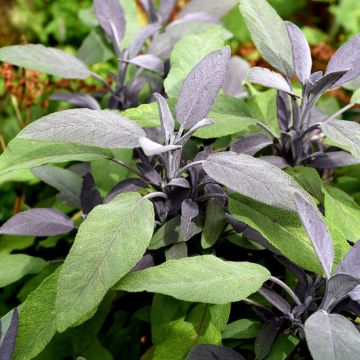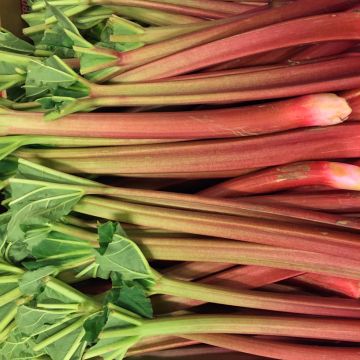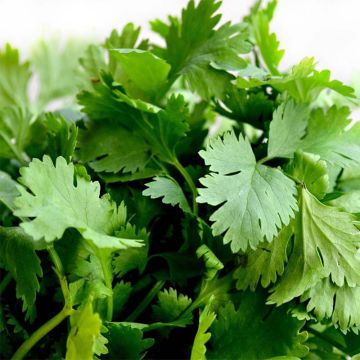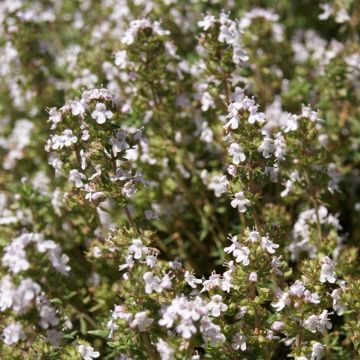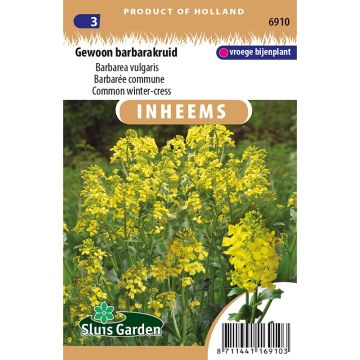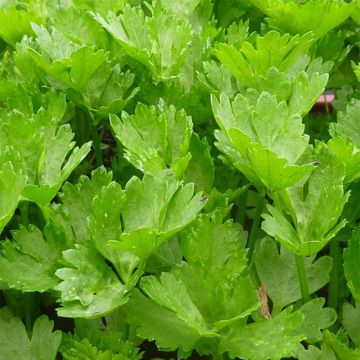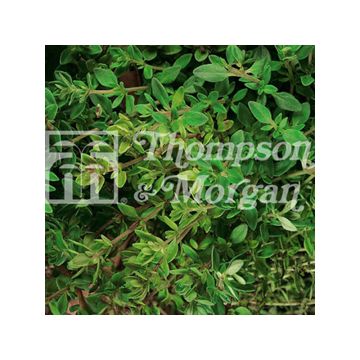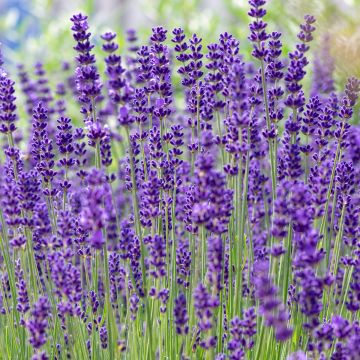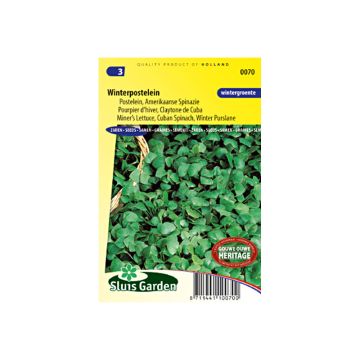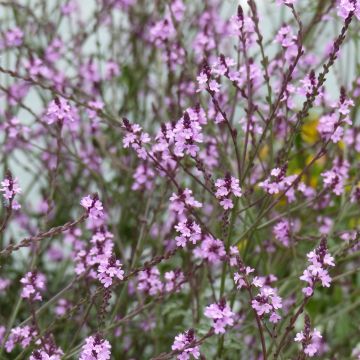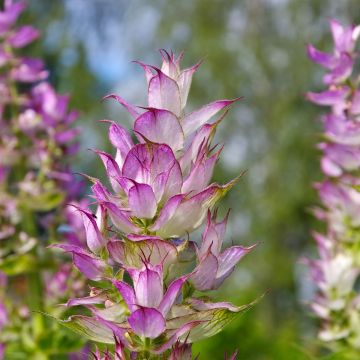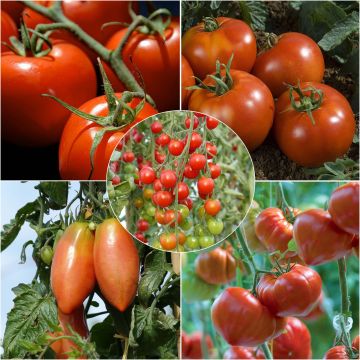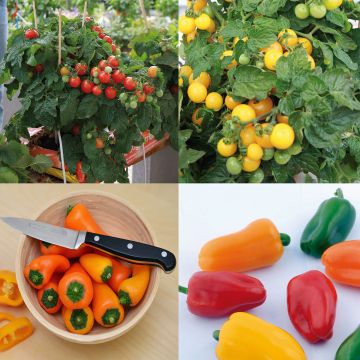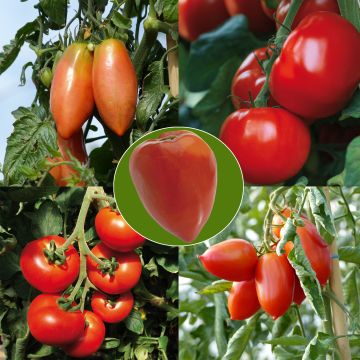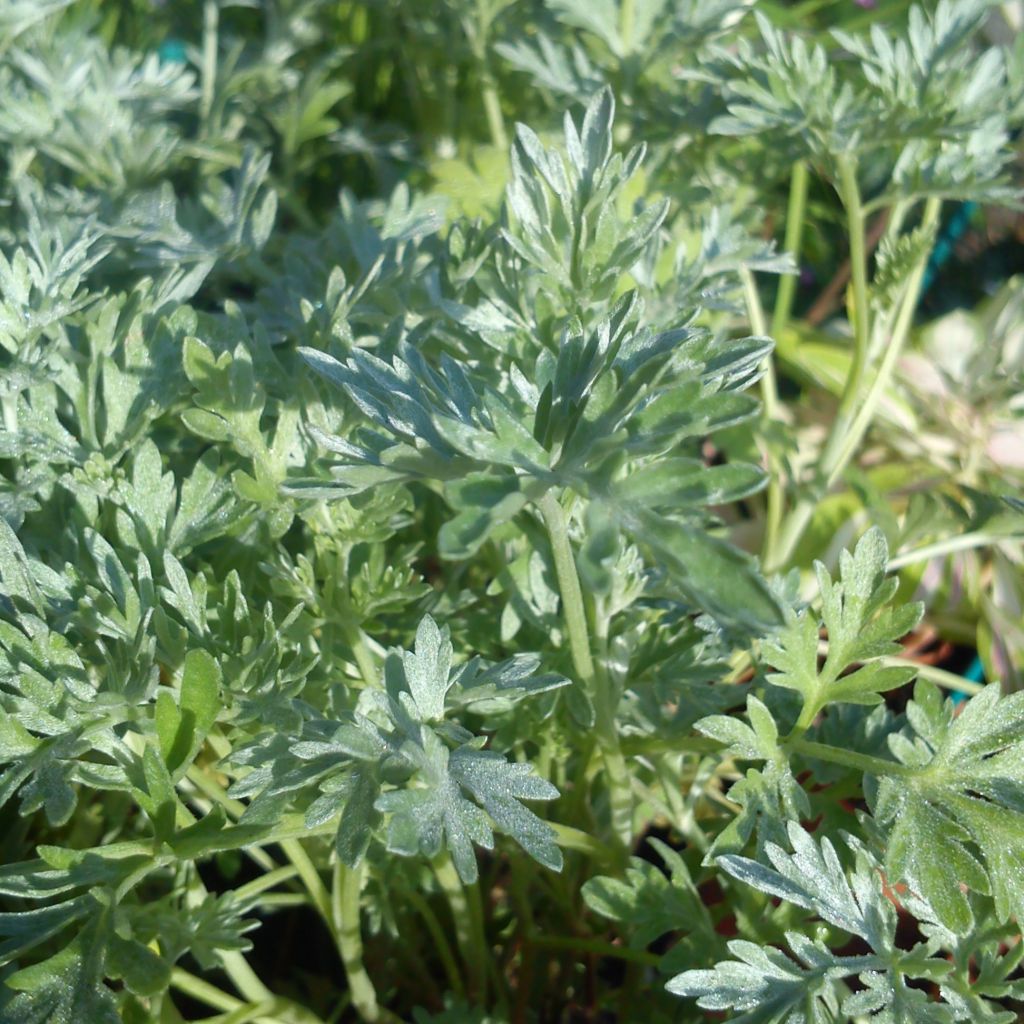

Common Wormwood - Artemisia absinthium
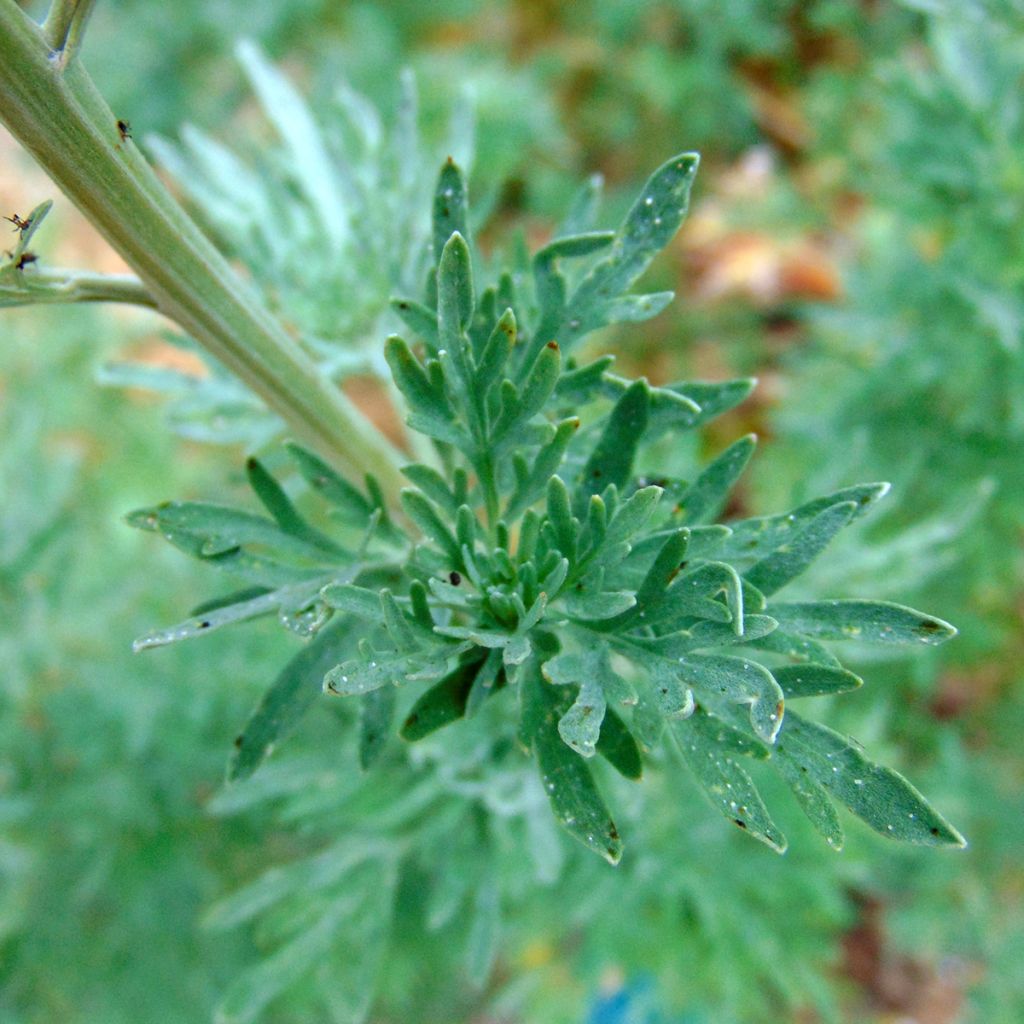

Common Wormwood - Artemisia absinthium
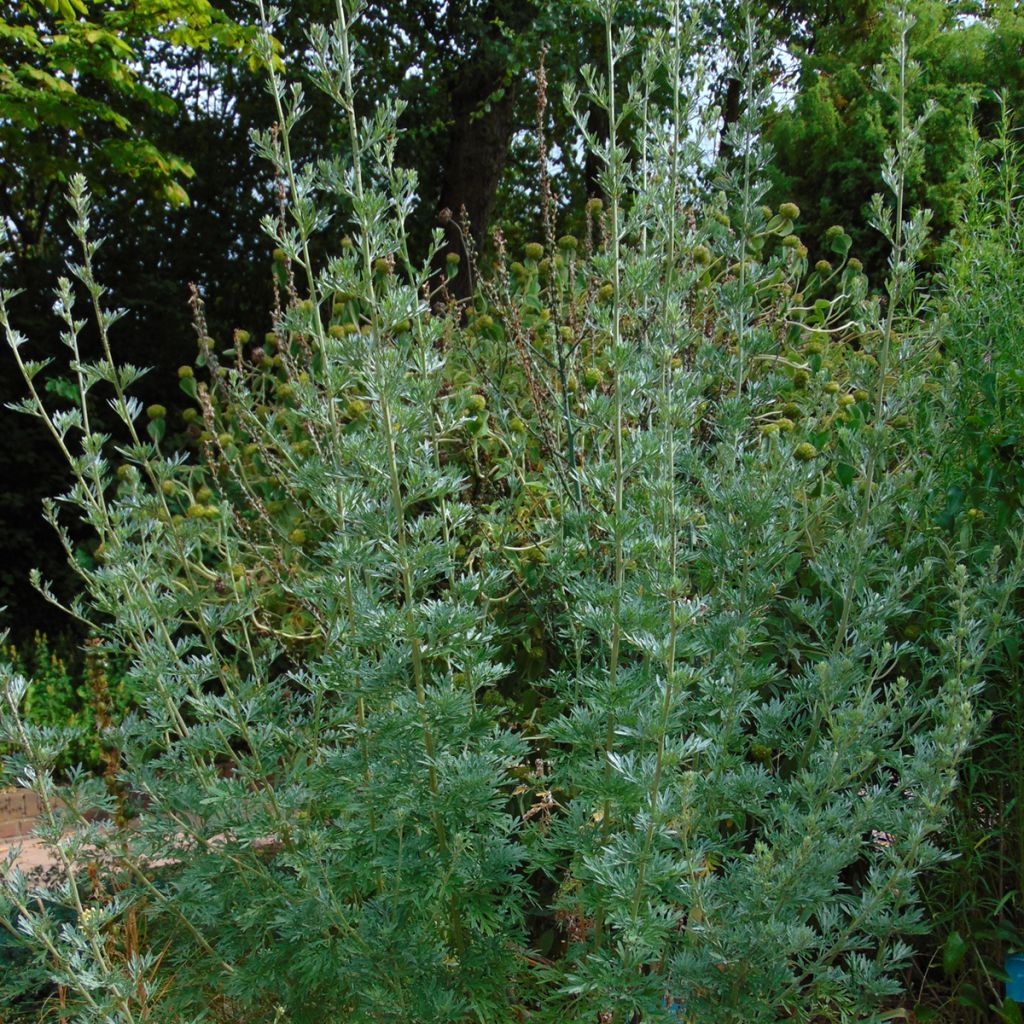

Common Wormwood - Artemisia absinthium
Common Wormwood - Artemisia absinthium
Artemisia absinthium
Wormwood, Absinth, Girdle of St John, Green ginger, Holy seed, Lad's love, Warmot
Hello, Just wanted to let you know that I planted my absinthe in a large container with Jasminum sambac. It has grown to 1m80! Incredible!
Julie, 01/12/2023
Special offer!
Receive a €20 voucher for any order over €90 (excluding delivery costs, credit notes, and plastic-free options)!
1- Add your favorite plants to your cart.
2- Once you have reached €90, confirm your order (you can even choose the delivery date!).
3- As soon as your order is shipped, you will receive an email containing your voucher code, valid for 3 months (90 days).
Your voucher is unique and can only be used once, for any order with a minimum value of €20, excluding delivery costs.
Can be combined with other current offers, non-divisible and non-refundable.
Home or relay delivery (depending on size and destination)
Schedule delivery date,
and select date in basket
This plant carries a 6 months recovery warranty
More information
We guarantee the quality of our plants for a full growing cycle, and will replace at our expense any plant that fails to recover under normal climatic and planting conditions.
Description
Common wormwood, also known as Artemisia, is a perennial plant with fine silver leaves punctuated by small yellow flowers in summer. It is cultivated for its ornamental appearance and its repellent and insecticidal properties, which are very useful in the vegetable garden. Plant it in autumn or spring and harvest its leaves the following summer.
Wormwood is native to continental regions of Europe, Asia, and North Africa. It belongs to the Asteraceae family and the Artemisia genus, along with mugwort and tarragon. It forms a bushy clump about 90 cm (35in) tall and 60 cm (24in) wide. It is a fragrant perennial plant with attractive greyish-green foliage and a summer flowering in compound panicles of small yellow flowers. It is hardy, at least down to -15°C (5°F), but has a relatively short lifespan. It should be pruned back in early spring to maintain a compact habit.
Wormwood was well-known in the 19th century as it was used to make an alcoholic beverage of the same name, which was so popular that it was banned in 1915 after causing madness in famous figures like Vincent Van Gogh.
Today, although the production of absinthe is again allowed, Artemisia absinthium is mainly cultivated for its ornamental appearance and its repellent and insecticidal properties. It is therefore a valuable ally in the vegetable garden, provided it is planted a little away from the cultivation beds (at least 1 m (3ft)) as it has a growth inhibiting effect on neighbouring plants.
In cooking, it is used to make a liqueur based on brandy. It is a plant with digestive properties that can also be used as a vermifuge. It is said to have abortive properties, so it should be used with great caution.
In the garden, wormwood thrives in sunlight, even intense sun, and prefers nitrogen-rich, rather dry, well-drained, and slightly alkaline soils. A dry soil will enhance the silvery colour of its foliage.
Harvest: The leaves are harvested just before flowering, in July-August, preferably in the late afternoon.
Storage: The leaves can be dried and stored in a dark, dry place.
Gardener's tip: Wormwood has a repellent effect on pests such as flea beetles and cabbage white butterflies. Due to its allelopathic effect, it cannot be planted too close to vegetables. It is interesting to pick a few fresh leaves and place them at the base of the crops to protect them. To combat aphids, ants, and caterpillars, prepare a wormwood infusion (300g of fresh plant per litre of water).
Report an error about the product description
Common Wormwood - Artemisia absinthium in pictures


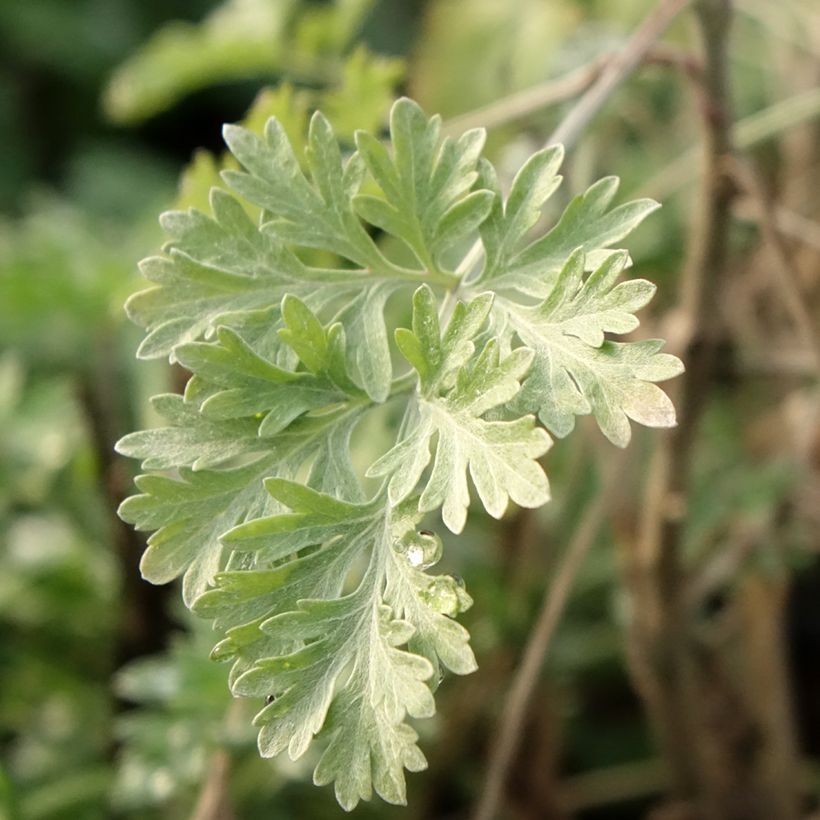

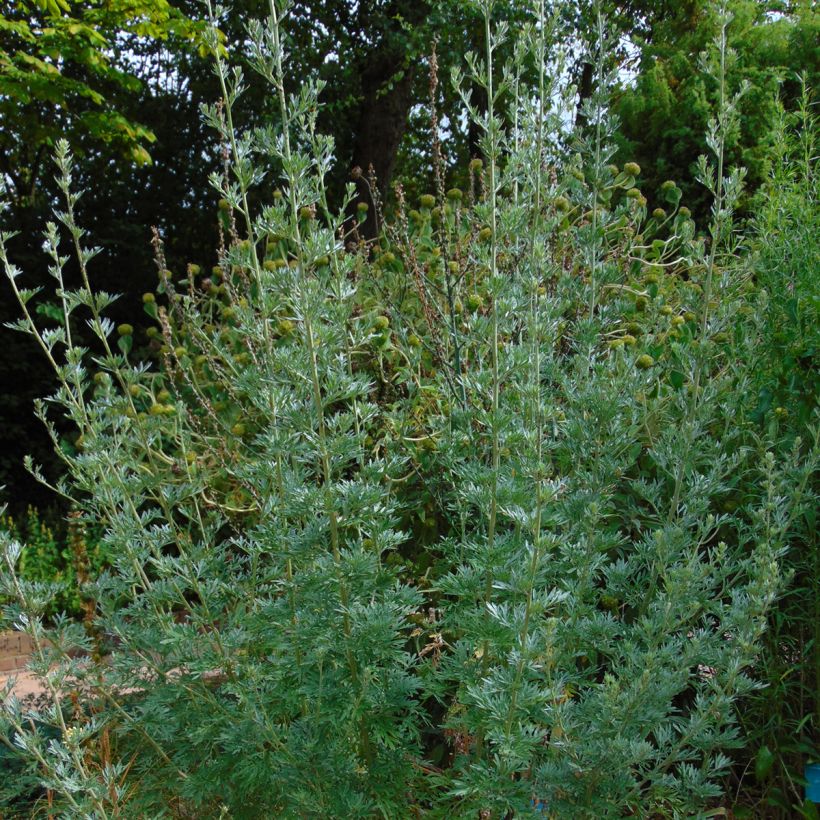

Harvest
Plant habit
Foliage
Other Herbs A to Z
View all →Planting and care
Artemisia absinthium thrives in full sun, even in scorching conditions, and prefers nitrogen-rich, rather dry, well-drained, and slightly alkaline soils. Choose a large location as it will quickly spread. It can be planted in autumn or spring.
Loosen the soil deeply. Plant the young plants, spacing them 80 cm (32in) apart in all directions. Interestingly, absinthe can be attacked by aphids. To remedy this, cut off the affected parts and spray with a soap-based solution. Trim the clump in early spring to maintain a compact habit. After flowering, cut back the flower stalks before they go to seed to prevent spreading in the garden.
Absinthe is hardy, at least down to -15°C (5°F), but has a relatively short lifespan. It is usually renewed after 3 years.
Cultivation
Care
Intended location
-
, onOrder confirmed
Reply from on Promesse de fleurs
Similar products
Haven't found what you were looking for?
Hardiness is the lowest winter temperature a plant can endure without suffering serious damage or even dying. However, hardiness is affected by location (a sheltered area, such as a patio), protection (winter cover) and soil type (hardiness is improved by well-drained soil).

Photo Sharing Terms & Conditions
In order to encourage gardeners to interact and share their experiences, Promesse de fleurs offers various media enabling content to be uploaded onto its Site - in particular via the ‘Photo sharing’ module.
The User agrees to refrain from:
- Posting any content that is illegal, prejudicial, insulting, racist, inciteful to hatred, revisionist, contrary to public decency, that infringes on privacy or on the privacy rights of third parties, in particular the publicity rights of persons and goods, intellectual property rights, or the right to privacy.
- Submitting content on behalf of a third party;
- Impersonate the identity of a third party and/or publish any personal information about a third party;
In general, the User undertakes to refrain from any unethical behaviour.
All Content (in particular text, comments, files, images, photos, videos, creative works, etc.), which may be subject to property or intellectual property rights, image or other private rights, shall remain the property of the User, subject to the limited rights granted by the terms of the licence granted by Promesse de fleurs as stated below. Users are at liberty to publish or not to publish such Content on the Site, notably via the ‘Photo Sharing’ facility, and accept that this Content shall be made public and freely accessible, notably on the Internet.
Users further acknowledge, undertake to have ,and guarantee that they hold all necessary rights and permissions to publish such material on the Site, in particular with regard to the legislation in force pertaining to any privacy, property, intellectual property, image, or contractual rights, or rights of any other nature. By publishing such Content on the Site, Users acknowledge accepting full liability as publishers of the Content within the meaning of the law, and grant Promesse de fleurs, free of charge, an inclusive, worldwide licence for the said Content for the entire duration of its publication, including all reproduction, representation, up/downloading, displaying, performing, transmission, and storage rights.
Users also grant permission for their name to be linked to the Content and accept that this link may not always be made available.
By engaging in posting material, Users consent to their Content becoming automatically accessible on the Internet, in particular on other sites and/or blogs and/or web pages of the Promesse de fleurs site, including in particular social pages and the Promesse de fleurs catalogue.
Users may secure the removal of entrusted content free of charge by issuing a simple request via our contact form.
The flowering period indicated on our website applies to countries and regions located in USDA zone 8 (France, the United Kingdom, Ireland, the Netherlands, etc.)
It will vary according to where you live:
- In zones 9 to 10 (Italy, Spain, Greece, etc.), flowering will occur about 2 to 4 weeks earlier.
- In zones 6 to 7 (Germany, Poland, Slovenia, and lower mountainous regions), flowering will be delayed by 2 to 3 weeks.
- In zone 5 (Central Europe, Scandinavia), blooming will be delayed by 3 to 5 weeks.
In temperate climates, pruning of spring-flowering shrubs (forsythia, spireas, etc.) should be done just after flowering.
Pruning of summer-flowering shrubs (Indian Lilac, Perovskia, etc.) can be done in winter or spring.
In cold regions as well as with frost-sensitive plants, avoid pruning too early when severe frosts may still occur.
The planting period indicated on our website applies to countries and regions located in USDA zone 8 (France, United Kingdom, Ireland, Netherlands).
It will vary according to where you live:
- In Mediterranean zones (Marseille, Madrid, Milan, etc.), autumn and winter are the best planting periods.
- In continental zones (Strasbourg, Munich, Vienna, etc.), delay planting by 2 to 3 weeks in spring and bring it forward by 2 to 4 weeks in autumn.
- In mountainous regions (the Alps, Pyrenees, Carpathians, etc.), it is best to plant in late spring (May-June) or late summer (August-September).
The harvesting period indicated on our website applies to countries and regions in USDA zone 8 (France, England, Ireland, the Netherlands).
In colder areas (Scandinavia, Poland, Austria...) fruit and vegetable harvests are likely to be delayed by 3-4 weeks.
In warmer areas (Italy, Spain, Greece, etc.), harvesting will probably take place earlier, depending on weather conditions.
The sowing periods indicated on our website apply to countries and regions within USDA Zone 8 (France, UK, Ireland, Netherlands).
In colder areas (Scandinavia, Poland, Austria...), delay any outdoor sowing by 3-4 weeks, or sow under glass.
In warmer climes (Italy, Spain, Greece, etc.), bring outdoor sowing forward by a few weeks.






























